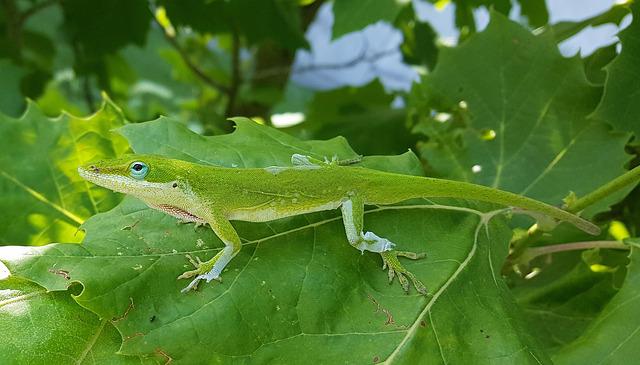Do anoles like to be held? This is a question that many people have asked, and it is a topic of debate among herpetologists. Some people believe that anoles enjoy being handled by humans, while others think that they don’t like it at all. This blog post will explore the truth about anoles and their personality.
Do anoles like to be held?
Many people enjoy keeping pet reptiles, and the anole is one of the most popular choices.
These small lizards are relatively easy to care for and can make exciting and enjoyable pets. But do they like to be held?
The answer is not as simple as a yes or no.
While some anoles enjoy being handled, others do not. It depends on the individual lizard’s personality. Some anoles will crawl onto their owners’ hands and even sit still for extended periods.
Others will become stressed when handled and may try to bite or squirm away. The best way to determine whether your anole enjoys being held is to try it and see how they react simply.
With a bit of patience and effort, you should be able to develop a bond with your pet that includes regular handling.
How to hold an anole without scaring it
To hold an anole without scaring it, first cup your hand around its body just behind the front legs.
Gently yet firmly, allow your thumb and fingers to meet to support the anole’s entire body. You should avoid holding the anole by its tail, as this can damage its spine.
If the anole tries to jump out of your hand, close your fingers a bit more until it feels secure.
Some people like to wrap their other hand around their wrists for additional support, but this is unnecessary.
With a bit of practice, you’ll be able to hold an anole without causing any distress.
What to do if your anole is stressed when picked up
If your anole is stressed when you pick it up, you can do a few things to help calm it down.
- First, make sure that you are supporting its body correctly. Hold it close to your body, and be careful not to squeeze too tightly.
- Second, try to keep your movements slow and smooth. Sudden movements can startle an already stressed animal.
- Finally, talk to your anole in a soft, calming voice. Letting it know that everything is okay.
These simple steps can help reduce your anole’s stress level and make handling easier for both of you.
Signs of a scared anole
If your anole is scared, you can do a few things to help.
- First, reduce the amount of noise and activity in the area where the anole is. This will help to create a calm environment and make it easier for the anole to feel safe.
- Next, provide some hiding places for the anole to use if it feels threatened. This could be a small cave or a hiding spot behind some plants.
- Finally, offer the anole some food to help it feel more secure. This could be live insects or small pieces of fruit.
By following these steps, you can create a safe space for your anole to relax and start to feel more comfortable.
How to tell when your anole is happy
As any reptile enthusiast knows, anoles are one of the most popular pet reptiles. These charming lizards are relatively easy to care for and make fascinating pets.
One of the most important things to know about anoles is how to tell when they are happy.
Although they are not as expressive as other animals, a few key signs indicate an anole is content. For example, a healthy anole will have bright coloration and be active and alert.
Additionally, they will often bask in the sun or heat lamps to stay warm. If your anole displays these behaviors, it is a good sign that they are happy and healthy.
Why do people keep anoles as pets
While anoles may not be the first animal to mind when you think of a pet, these small lizards can make for surprisingly rewarding companions.
They are relatively low-maintenance pets, requiring only a few hours of care each week.
In addition, they are relatively long-lived creatures, with many anoles living ten years or more in captivity. But perhaps the most appealing thing about anoles is their vivid appearance.
These lizards come in various colors, from vibrant greens and oranges to more subdued browns and grays.
As a result, they can add a splash of color to any home. Whether you’re looking for a low-maintenance pet or want to brighten up your home, anoles make an excellent choice.




